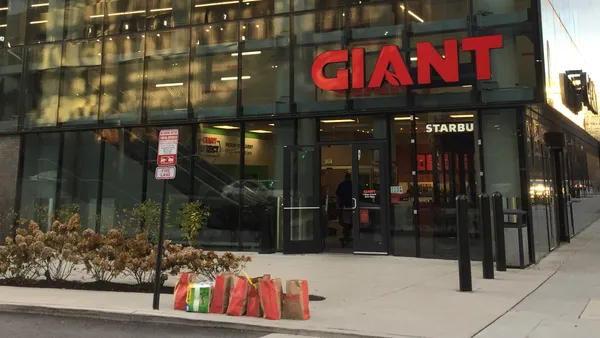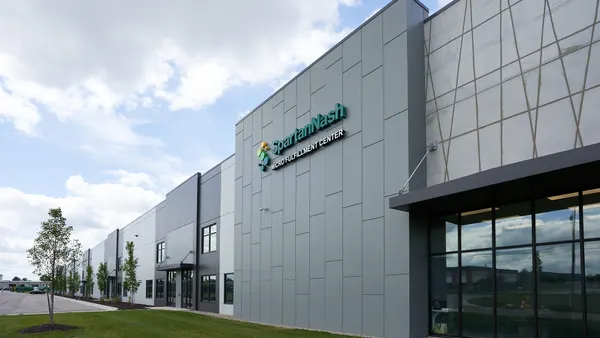Dive Brief:
- Online grocery sales have created a growth opportunity for cold storage facilities in the U.S., according to a new report from CBRE. Currently, the cold storage industry maintains 214 million square feet, and CBRE anticipates demand for up to 100 million more in the next five years.
- Major metropolitan centers like New York and Los Angeles are the most likely locations for cold storage growth in addition to strong food production states including California, Florida, Texas and Washington.
- The cold storage industry is dominated by a few key players, with four companies controlling 73.4% of the refrigerated warehouse space in North America. CBRE expects to see more transformation and possible consolidation as the space evolves.
Dive Insight:
The steady rise of online grocery is beginning to create a ripple effect. By 2022, online grocery sales will account for 22% of total grocery sales, according to the Food Marketing Institute and Nielsen, and grocers across the U.S. are showing a need for more warehouse space. Retailers and existing cold storage logistics companies will have to ramp up their square footage not only to meet new demand, but to modernize outdated facilities.
Building new cold storage warehouses may not be a simple undertaking, however. The cost of construction and the need for more sophisticated technology to power warehouses require a deep pocketbook and a long construction timeline as well, according to the report. Last year, CBRE reported that the average cost to build a cold storage facility is 40% higher than building dry warehouse space. As a testament to the complexity, 79% of cold storage capacity is outsourced by food producers, according to U.S. Department of Agriculture data. Only 21% of cold storage facilities are managed in-house.
Another limiting factor for cold storage facilities is going to be finding space, especially in densely populated cities where online grocery demand is particularly high. Builders will have to get creative to adapt new cold storage facilities to fit available real estate in the metro areas that need them.
Retailers with substantial resources may have the option of creating their own in-house cold storage solutions if the cold storage industry can’t ramp up fast enough to meet demand, which could leave smaller retailers without the same financial flexibility to lose even more market share to the largest retailers.
To boost its Amazon Fresh business, Amazon is planning multimillion-dollar upgrades to its Prime Now warehouses in Seattle. Amazon’s Whole Foods acquisition also increased its cold storage, giving the retailer access to cold space within 10 miles of roughly 80% of the population due to the store locations being in or near major city centers.
Kroger and Penske Logistics just announced the opening of a 606,000-square-foot food distribution facility comprised primarily of refrigerators and freezers, according to Crain's Detroit Business. The warehouse commanded a $98.5 million investment from Kroger and has 105 loading docks to support Kroger's 120 stores in the state of Michigan.
In October, Walmart announced a new high-tech warehouse facility focused on fresh and frozen grocery slated to open in 2020.










